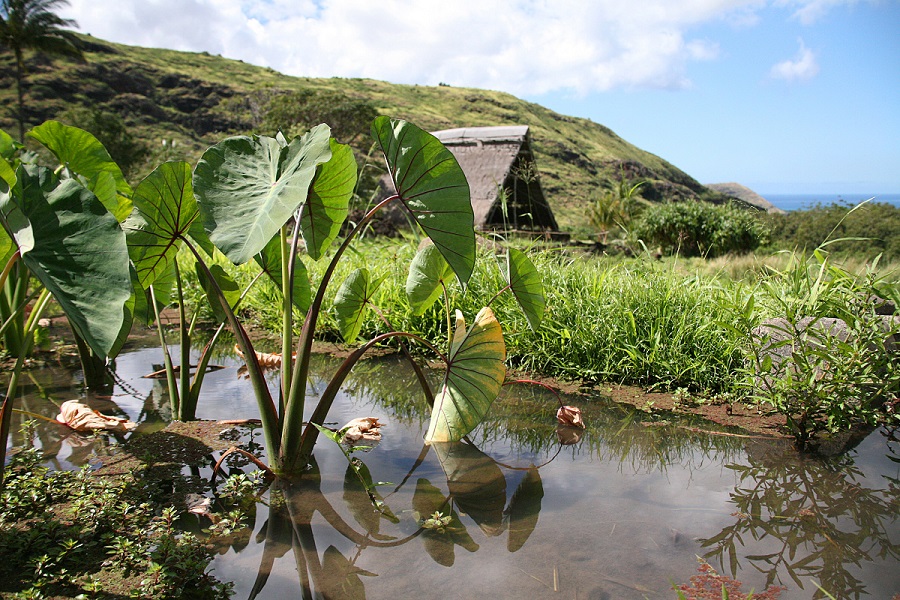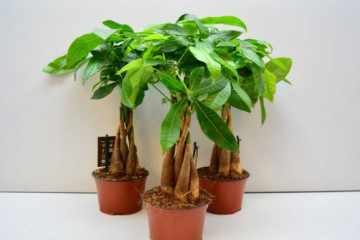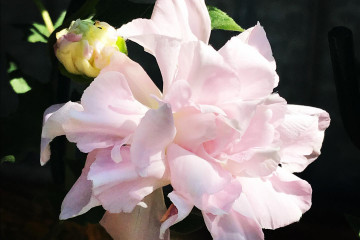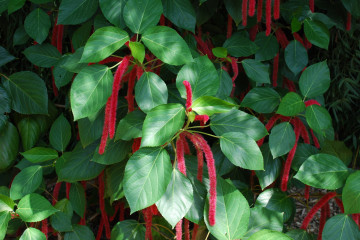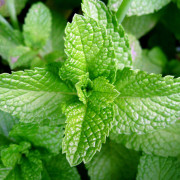Alokazia - home care, description of Polly and Amazonian varieties
Content:
Home flowers serve as a decoration for the house and delight the eye with their various shapes and colors. Alocasia, which reproduction at home is available to every grower, has many adherents. This exotic plant is evergreen and rarely sheds its leaves.
Appearance and characteristics
Plant of the Aroid family, perennial and herbaceous. The leaves range in color from light green to dark with light veins. Tropical origin has left its mark, because the plant has the following set of parameters:
- the height ranges from 0.4 to 2 m;
- the stem is thick, juicy and sometimes arboreal;
- when cut, the plant secretes milky juice;
- the fruits of alocasia are berries that have an ellipsoidal or hemispherical shape;
- leaves of various colors, their number ranges from one to several pieces;
- the shape of the leaves can be different: arrow-shaped, cordate or thyroid.
The flower, with the help of leaf plates, dumps excess moisture that it cannot absorb. With excessive watering or high humidity, it “cries”, exuding moisture.
Common varieties
The undersized Alocasia Amazonica is artificially bred from two species: Lowe and Sandera.
Amazon flower fruit
When such a flower is sold, it is often called Sandera. They are confused because of their similarity in appearance. Amazonian alocasia is a hybrid, which means it is a completely different plant. You can distinguish it by the following features:
- the edges of the leaves are smoothly wavy;
- white veins on a dark leaf, deepened like scratches or small cracks.
Amazonica rarely blooms and exudes a deep intoxicating scent. Household specimens do not have fruits.
The taller species of this family is Alocásia Polly. Shrub up to 0.5 m high with a thick, upright stem. Its tuberous roots are large enough. It stands out from other species by the following differences:
- dark leaves, heart-shaped, metallic tint, up to 40 cm long;
- streaks of beige or pale green colors;
- flowering is regular.
At the edge of each leaf of the mouth, there are hydrators for dumping moisture. Alocasia Polly for home care does not require large pots and a lot of space for maintenance.
Information. Alocasia Sandera, as the species from which Polly is descended, was bred in greenhouses. This same hybrid Alocásia Polly was bred specifically for indoor use.
Healing properties
Of the 70 varieties of this tropical plant, only two are assigned medicinal properties:
- Alocasia macrorrhizos (large-rhizome, popularly - Indian Arum), whose thickened roots can be confused with ginseng roots, bright green heart-shaped leaves have juicy petioles up to a meter long;
- Alocasia odora (fragrant) - meter-long leaves like shields on trunks reaching 2-2.5 m.
It is easy to confuse the two varieties. The difference between alocasia odorous is that it has stolons - lateral shoots that quickly die off. They are used for reproduction. Underdeveloped foliage and axillary buds are located on the stolons.Large-rooted alocasia does not have such shoots.
Alocasia is a home plant that is treated with alocasia tincture.
The deciduous mass of these plants disinfects the air in the home, absorbing the dangerous emissions of formaldehyde, phenol and others like them. In addition, the phytoncides that make up the leaf affect staphylococci, influenza viruses. They also kill E. coli and streptococci.
This can also be attributed to medicinal properties.
Tincture application
An alcoholic infusion of petioles and leaves can be used externally for rubbing or compressing. It is believed that he can:
- help with inflammation and swelling;
- starts the process of tissue repair;
- reduces joint pain.
Alocasia tincture is prepared by grinding the plant in a ceramic bowl. No metal tools are used. The ratio of crushed gruel and alcohol is 1: 1. The resulting solution is stored in the dark for 21 days.
Features of caring for a plant at home
Alocasia home care involves maintaining the following conditions:
- temperature regime;
- control of soil and air moisture;
- lighting standards;
- top dressing and soil quality.
Creating a climate close to natural growing conditions is the main concern of the grower.
Temperature
Temperature range for alocasia:
- spring and summer - 23-25 0С;
- winter - 18-20 0С.
As with all indoor flowers, drafts are unacceptable on the plant.
Lighting
The most favorable lighting for growth and reproduction is diffused light. Direct exposure to sunlight is not permitted. The arrangement of pots with flowers on the windowsills on the south side necessarily implies shading.
Watering
In warmer months, watering daily. In the autumn - once every two to three days. In winter - one day after the top layer dries. If a small amount of water has accumulated in the pan of the pot, it is drained.
Spraying
Leaves are wetted with warm water using a spray bottle every day. Every three days, it is advisable to wipe the surface of the leaves with a damp sponge or fiber.
Humidity
Air humidification is provided by arranging large-diameter cups of water among the flowers. Water, evaporating, will give the required percentage of moisture.
Priming
For indoor flowers, use special low-acid (5.5-6.5) substrates from the store. Root nutrition will be provided by mineral additives and porous charcoal. Give preference to universal peat-based formulations (top). Regular ground won't work.
Top dressing
It is better to take complex fertilizers with an increased percentage of nitrogen for decorative deciduous crops. Mineral feeding is needed a couple of times a month.
In winter
Winter care for alocasia consists in maintaining the desired temperature and illumination. Eliminate a sharp drop in temperature when airing rooms. Spraying is carried out once a week.
Pruning
This operation is carried out with gloves with sharp garden shears or a knife, always with a clean tool. Dry leaves are removed. Green - only as a last resort.
How the plant reproduces
Florists share planting material and acquire new types of flowers. The main breeding methods include the following options:
- cuttings;
- seeds;
- dividing roots or stolons (lateral shoots).
Germinating seeds
For germination, take seedling cassettes and suitable soil. The seeds are planted immediately after they are harvested. The cassettes are filled with soil, the seeds are placed in the cells and sunk to the depth of one phalanx of the finger. Then a thin layer of soil is laid on top and moistened. The cassette is tightened with a film (a kind of greenhouse) or covered with a sheet of glass. The moisture content of the soil is kept high, the lighting is constant. Germinated at a temperature of + 22 ... + 25 ° C.
Open the cassettes after sprouting. When 2-3 leaves appear on the shoot, they are planted in pots up to 10 cm in diameter. Further transplantation is performed when the roots fill the container.
Rooting cuttings
The leaf is cut at an angle of 45 °, leaving a fragment with the flesh of the trunk. Withstand 2-3 hours, sprinkling with ash. After that, the cutting is dipped in Kornevin (sold in stores) for 2 hours and planted in a container. The pot is pre-filled with suitable soil. When signs of development of new leaves appear, it means that the rooting of the cuttings has occurred.
Transfer
Having analyzed how alocasia multiplies, you need to learn how to transplant it correctly. This is done in the spring. Young shoots are transplanted every year, mature ones - once every 3 years.
For this, the transshipment method is used. The plant is taken out of the old pot, together with the soil, it is placed in a more spacious one (one size), filling the free space with new soil.
Possible growing problems
Alocasia has no fewer diseases than other flowers. Leaves can signal this.
Leaves turn yellow
How to treat if the leaf began to turn yellow? Leaves can change color for the following reasons:
- yellowness around the edges - poor water composition;
- the whole leaf has changed color - lack of nutrition or a sign of aging.
The old leaves are cut off after drying.
The tips of the leaves dry
This is a sign of necrosis infection. Draft, violation of the temperature regime, stagnation of moisture in the pot lead to such a problem.
The lower leaves fall
This happens when the flower is cramped in the pot, there is a lack of nutrients, or pests have appeared.
Pests
Alocasia has a big enemy - the spider mite. Invisible to the naked eye, it lays the larvae on the bottom of the leaf. A white spider web and red dots are sure signs of a pest.
Proper care of the plant, pest control will help alocasia take its rightful place in the house. If you take care of it, the plant will bloom and not only decorate the interior, but also create a healthy microclimate throughout the room.
